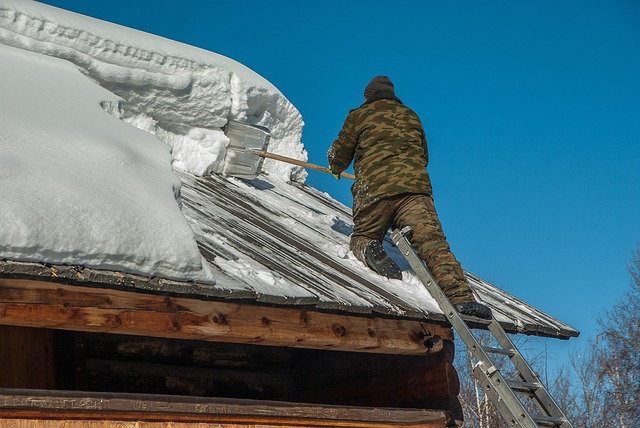This TL;DR covers the critical aspects of commercial snow removal Brampton contracts. It highlights the importance of a precise scope of services, explicit service triggers, operational frequencies, and required methods or equipment to ensure both property owner expectations are met and business continuity is supported during winter months. The article stresses the necessity for the contract to detail tailored action plans, response times after snow events, service areas, and environmental protections. It also underscores the need for a clear communication plan in case of service interruptions or schedule changes due to severe weather. A robust contract should include transparent pricing models, whether per event or as a seasonal flat rate, and address additional services like salting or sanding. Key factors such as defining specific conditions that trigger snow removal, outlining payment schedules, cancellation policies, liability limitations, and conflict resolution mechanisms are essential to facilitate a seamless commercial snow removal Brampton Brampton Brampton service throughout the winter months, ensuring client needs are met with efficiency and effectiveness by the service provider. The focus on detailed contracts ensures clarity, minimizes misunderstandings, and supports efficient service delivery, safeguarding the interests of property owners and enabling commercial snow removal Brampton services to be performed as contractually agreed.
When winter’s chill sets in, a reliable commercial snow removal Brampton contract is indispensable for maintaining business continuity and ensuring customer and employee safety. This article delves into the critical components of a robust agreement, covering the scope of services, defining responsibilities, setting service levels, and establishing pricing within your commercial snow removal services contract. By understanding these elements, businesses can navigate the winter season with confidence, guaranteeing their operations remain uninterrupted despite the frosty conditions.
- Defining Clear Scope of Services in a Commercial Snow Removal Contract
- Outlining Responsibilities and Expectations in Snow Management
- Setting Service Levels and Prioritization for Different Areas
- Establishing Pricing, Terms, and Conditions in Your Snow Removal Agreement
Defining Clear Scope of Services in a Commercial Snow Removal Contract

When entering into a commercial snow removal contract, it is imperative to establish a clear scope of services to ensure that both parties have a mutual understanding of the responsibilities and expectations. A well-defined scope in a commercial snow removal agreement outlines the specific duties the service provider will undertake, such as plowing, shoveling, salting, and de-icing, as well as detailing the areas to be maintained, including parking lots, walkways, and entryways. This clarity helps prevent misunderstandings during the winter season when time is of the essence and conditions can be treacherous. Property owners should specify the frequency of snow removal operations, the levels of snowfall that trigger service activation, and any particular methods or equipment to be used. Additionally, the contract should articulate the service provider’s response times following significant snow events to maintain business operations and ensure the safety of customers, employees, and visitors. By clearly defining the scope of services within a commercial snow removal contract, both parties can effectively manage expectations and operational outcomes throughout the winter months. This not only protects the interests of the property owner but also ensures that the service provider can efficiently provide commercial snow removal services as agreed upon.
Outlining Responsibilities and Expectations in Snow Management

When engaging a commercial snow removal service, it’s crucial to clearly outline the responsibilities and expectations within the contract to ensure a seamless snow management operation. The agreement should detail the specific services offered under commercial snow removal, such as plowing, shoveling, salting, and de-icing, along with the frequency and priority of service areas. This clarity prevents misunderstandings regarding the scope of work and helps both parties set realistic expectations. The contract should specify the trigger points for snow removal activities, including thresholds for snowfall accumulation and timing considerations based on forecasts or actual weather conditions. Additionally, the responsibilities should cover the areas to be serviced, equipment to be used, and any environmental protocols to minimize damage to landscaping or sensitive surfaces.
Furthermore, the contract should outline the expectations for response times, operational hours, and the level of effort required to maintain accessibility and safety for all facility users. It’s important to establish a communication plan within the contract to ensure that the service provider can promptly notify the client of any issues or schedule changes due to extreme weather events. This proactive approach to communication facilitates better preparation and reduces downtime for businesses. By carefully outlining these responsibilities and expectations in a commercial snow removal contract, both the property owner and the service provider can work collaboratively to manage winter conditions effectively, ensuring business operations continue uninterrupted.
Setting Service Levels and Prioritization for Different Areas

When engaging in a commercial snow removal contract, establishing clear service levels and prioritization for different areas is paramount for operational efficiency and client satisfaction. A well-defined agreement should outline specific action plans for snow removal that cater to the varying criticality of spaces. For instance, primary areas such as parking lots, main entrance ways, walkways, and emergency exits must be cleared promptly upon the onset of significant snowfall to ensure safe passage and compliance with local regulations. These high-priority zones demand immediate attention due to their impact on business operations and customer accessibility. In contrast, secondary areas like landscaped gardens or less frequented pathways can be addressed after the primary areas have been cleared. The contract should specify the timeframes within which these areas will be attended to, ensuring that all outdoor spaces are managed effectively throughout the winter season. By setting these service levels and prioritization guidelines, commercial snow removal services can deliver consistent, reliable outcomes that align with the client’s needs and expectations, while also maintaining the integrity and functionality of the property during adverse weather conditions.
Establishing Pricing, Terms, and Conditions in Your Snow Removal Agreement

When entering into a commercial snow removal agreement, establishing clear pricing, terms, and conditions is paramount to ensure both parties are on the same page. The pricing structure for commercial snow removal services should be transparent, detailing the cost per event or a flat rate for the season, including any clauses for additional services like salting or sanding. It’s crucial to specify what triggers snow removal operations—such as the amount of snowfall or ice accumulation—to avoid confusion during the winter months. The contract should also outline the frequency and timing of snow removal activities to maintain business operations uninterrupted. Additionally, the terms should cover the scope of work, including the areas to be cleared, equipment to be used, response times upon activation, and any weather-related exceptions. It’s essential to set expectations for service levels, such as how quickly the property should be cleared after a snow event has ended. Furthermore, both parties must agree on the conditions that govern the relationship, like payment terms, cancellation policies, liability limitations, and the process for handling disputes. These details help in maintaining a smooth operation throughout the winter season, ensuring that the commercial snow removal services provided meet the needs of the client and are delivered efficiently and effectively by the service provider.
In conclusion, a robust commercial snow removal contract is pivotal for ensuring that your business operations continue uninterrupted throughout the winter months. It begins with a clear scope of services, outlining what is included in the snow removal process to avoid any ambiguity. Next, it’s crucial to delineate responsibilities and expectations to maintain open communication and set realistic expectations for both the service provider and the client. Service levels and prioritization must be established to address critical areas first, ensuring safety and accessibility. Lastly, pricing, terms, and conditions should be transparently articulated within the agreement to foster trust and prevent misunderstandings. By carefully considering each of these elements, businesses can safeguard their premises effectively, minimizing disruptions caused by snowfall. Investing in a well-structured commercial snow removal contract through reputable commercial snow removal services is not just a seasonal measure but a strategic move to ensure year-round accessibility and safety.




